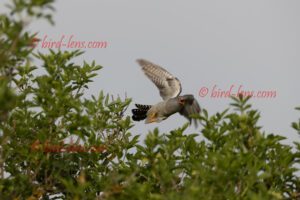 As soon as I arrived at a hide, I hear the calls of at least 5 Common Cuckoos (Cuculus canorus). You don’t have to do much to get a individual in front of the lens. The elemantary drive of the birds to set up or maintain a territory is basically sufficient. Nevertheless, I wanted to help a little and lure a Common Cuckoo with cuckoo calls from the tape to the elder bush in front of a pulpit. Contrary to what is commonly assumed, the typical “cuckoo, cuckoo” is more the singing. On the other hand, a choppy giggling and clearly audible hissing indicate that a territory is to be defended or a supposed rival is to be impressed. I stood in a covered hunting booth with an Elderberry (Sambucus nigra) eight meters away. I put the loudspeaker for the MP-3 player on a branch of the elderberry. I am connected quickly with Bluetooth and can start and end the calls via the MP-3 player.
As soon as I arrived at a hide, I hear the calls of at least 5 Common Cuckoos (Cuculus canorus). You don’t have to do much to get a individual in front of the lens. The elemantary drive of the birds to set up or maintain a territory is basically sufficient. Nevertheless, I wanted to help a little and lure a Common Cuckoo with cuckoo calls from the tape to the elder bush in front of a pulpit. Contrary to what is commonly assumed, the typical “cuckoo, cuckoo” is more the singing. On the other hand, a choppy giggling and clearly audible hissing indicate that a territory is to be defended or a supposed rival is to be impressed. I stood in a covered hunting booth with an Elderberry (Sambucus nigra) eight meters away. I put the loudspeaker for the MP-3 player on a branch of the elderberry. I am connected quickly with Bluetooth and can start and end the calls via the MP-3 player.
Around 6:00 a.m. the time has come. After only a short time the lure calls come back. In the field of view of one of the slits I see the Common Cuckoo at a distance of only 20 meters. For minutes he and other conspecifics responded to the calls of the MP-3 player. Finally it flies over the Elderberry several times and sits down on the bush. A choppy giggling and clearly audible hissing indicated that he wants to impress the supposed rival. Suddenly, as if enchanted, he suddenly sits on the Elderberry tree, turns back and forth, twitches his tail every second and bends his head down in the direction of the loudspeaker. Then again he scans the skies for competitors. Suddenly it spins at incredible speed, widens its beak to reveal its red throat and then flies over the bush at high speed to chase another Common Cuckoo that is trying to compete for its territory.
Territorial occupation seems to play a key role in the life of the Common Cuckoo in its breeding range in Germany. A breakdown of the districts according to landscape types shows that the types of small bodies of water and wet forest are the frontrunners. The term “moist forest” usually includes small alder swamps, narrow brook forests and strips of wet forest along the large bodies of water, which are usually accompanied by open water areas (large bodies of water, ponds, canals, ditches). Next in line are the lakes and large bodies of water, which have a significant proportion of closed reed belts. With this, the Common Cuckoo is identified as an outspoken lover of the wetlands in Brandenburg. The Common Cuckoo stays in areas with a small-scale forest structure, without also using the interior of the forest. This also applies to the alder areas in the middle of closed forest areas, which the Common Cuckoo avoids. In Brandenburg it is not really a forest bird. Wetlands and other semi-open landscapes are therefore of considerable importance for the habitat used by the Common Cuckoo.
A nice image I shoot with the Canon EF 400mm f/2.8 IS II USM lens on a Canon EOS 5 R.
To cope with the growing demand for top shots of the rarer species of the Palearctic Bird-Lens is keen to enrich the range of pictures of birds you can find in the western palearctic and beyond. Trips to places like this one to capture images not only of rare birds of western palearctic were very successful. The nice image of the blog is only a first impression, what you will find in the gallery in the “Picture Shop” very soon. Just give bird-lens.com a message, if bird-lens.com could serve you with an image needed before the new pictures are online.